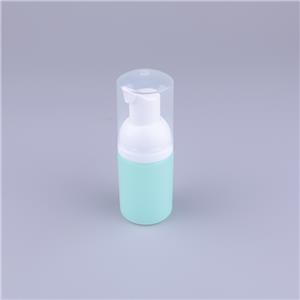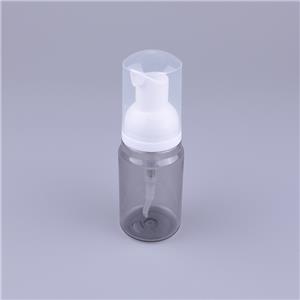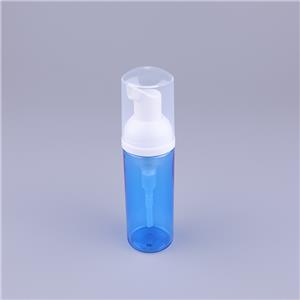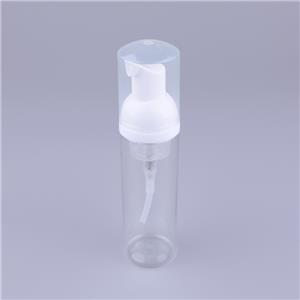- Home
- >
- News
- >
- Public Information
- >
- Comprehensive analysis of ABS raw materials: from molecular structure to industrial applications
Comprehensive analysis of ABS raw materials: from molecular structure to industrial applications
ABS (Acrylonitrile Butadiene Styrene), as a milestone ternary copolymer thermoplastic, has become one of the world's largest and most widely used general-purpose engineering plastics since its industrialization by the American Rubber Company (now Dow Chemical) in 1954, thanks to the synergistic advantages of three monomers. Its annual output exceeds 10 million tons, widely penetrating into core areas of the national economy such as automobiles, home appliances, 3C, toys, etc. A deep understanding of the molecular composition, production process, performance system, classification standards, and application boundaries of ABS raw materials is of great guiding significance for material selection, process optimization, and product innovation.
1、 Molecular composition and structural characteristics
The excellence of ABS stems from its unique "three-phase synergistic" molecular design. The three monomers form stable microstructures through lotion grafting or bulk polymerization, laying the foundation for macro performance.
Role division of ternary monomers
The molecular chain of ABS is composed of three structural units in specific proportions, each responsible for key functions:
Acrylonitrile (AN): accounting for 20% -30%, the strongly polar cyano group (- CN) endows the molecular chain with rigidity and polarity, enhancing the material's tensile strength, hardness, and chemical resistance. For every 5% increase in content, the tensile strength can be increased by 3-5 MPa, but the impact strength will decrease by 10% -15%.
Butadiene (BD): accounting for 15% -30%, exists as a rubber phase, and its unsaturated double bond structure endows the material with elasticity and impact resistance. Rubber particles (diameter 0.1-1 μ m) are uniformly dispersed in the continuous phase, absorbing impact energy like miniature "shock absorbers". The higher the content, the better the low-temperature toughness.
Styrene (St): accounts for 40% -60%, providing good processing fluidity and surface glossiness. The benzene ring structure enhances the rigidity of the molecular chain while reducing material costs. Excessive content can lead to increased brittleness and decreased impact strength.
This design of "rigid skeleton+elastic dispersed phase" has achieved a breakthrough in the mechanical properties of ABS, overcoming the brittleness of PS and compensating for the insufficient rigidity of PE.
Microstructure and morphology control
The microstructure of ABS exhibits a typical "island structure": the continuous phase is styrene acrylonitrile copolymer (SAN), with a glass transition temperature (Tg) of about 100 ℃; The dispersed phase is polybutadiene rubber particles with a Tg of about -80 ℃, and the two are tightly bonded through graft bonds. The particle size and distribution of rubber phase are key factors affecting performance:
Particle size 0.1-0.5 μ m: The highest impact strength, suitable for impact resistant scenarios.
Particle size 0.5-1 μ m: better flowability, convenient for complex molding.
Particle size distribution deviation<20%: optimal performance stability.
Modern polymerization technology precisely controls the morphology of rubber phase through seed lotion polymerization. For example, multi-step feeding method is used to prepare rubber particles with core shell structure. The core is low cross-linked butadiene rubber (shock absorption), and the shell is SAN graft layer (enhanced compatibility), which increases the impact strength by more than 30%.
2、 Production process and quality control
The production process of ABS is complex and the technical barrier is high. Different process routes directly affect the product performance and cost. At present, the global mainstream processes can be divided into two categories: lotion grafting bulk blending method and continuous bulk polymerization method.
Comparison of mainstream production processes
Lotion grafting bulk blending method (accounting for 70% of global production):
Three steps were carried out: ① butadiene lotion polymerization to prepare rubber latex (particle size 0.1-1 μ m); ② Graft copolymerization with styrene and acrylonitrile to form graft latex; ③ After coagulation and drying of latex, it is melt blended with SAN resin (styrene acrylonitrile copolymer) in a twin-screw extruder. This process can accurately control the particle size of rubber phase, and the product has high impact strength (15-40kJ/m ²), but the process is long and energy consumption is high, with an energy consumption of about 800kWh per ton of product.
Continuous ontology aggregation method:
Continuous polymerization is carried out in 3-4 reactors in series: in the first reactor, butadiene copolymerizes with some styrene to form a rubber phase, and in the subsequent reactors, acrylonitrile and residual styrene are added to form a continuous SAN phase. The process flow is short (only 2-3 hours) and energy consumption is low (about 500kWh per ton). It is suitable for producing high fluidity grades (MFR>20g/10min), but the dispersion uniformity of rubber phase is slightly poor, and the impact strength is 10% -20% lower than that of the lotion method.
Key process parameter control
During the aggregation process, the following parameters need to be strictly controlled:
Reaction temperature: 70-90 ℃ for lotion method and 100-160 ℃ for bulk method. Temperature fluctuation shall be controlled within ± 2 ℃, otherwise, molecular weight distribution will become wider.
Conversion rate: the conversion rate of lotion graft stage is 70% -80%, and the total conversion rate of bulk polymerization is 85% -90%. If it is too low, the monomer recovery cost will increase, and if it is too high, the thermal stability of the product will decline.
Molecular weight distribution: By adjusting the initiator dosage, the weight average molecular weight/number average molecular weight (Mw/Mn) should be controlled between 2.0-3.0 to ensure a balance between processing performance and mechanical properties.
During the granulation stage, additives need to be added: antioxidants (such as 1010+168 composite system) to prevent thermal degradation, lubricants (such as zinc stearate) to improve flowability, color masterbatch to achieve basic color matching, and the total amount of additives added is usually less than 3%.
3、 Performance system and key indicators
The performance system of ABS exhibits a "balanced" characteristic, showing excellent performance in mechanics, thermodynamics, chemistry, processing, and other aspects without obvious shortcomings, which is the core reason for its wide application.
Mechanical properties: the golden ratio of rigidity and toughness
Tensile strength: 30-50MPa (ASTM D638), better than PE (20-30MPa) and PS (40-50MPa, but brittle), can meet the needs of most structural components.
Impact strength: The notch impact strength is 10-40kJ/m ² (ASTM D256), and the low-temperature impact retention rate at -40 ℃ is>70%. It is one of the most low-temperature impact resistant varieties among general plastics.
Bending performance: bending strength of 50-80MPa, bending modulus of 1800-2800MPa, moderate rigidity, suitable for making components with support requirements.
Hardness: Shore D hardness of 65-85, with better surface scratch resistance than PE and PP, which can meet the wear resistance requirements in daily use.
Thermal performance: Suitable for conventional environmental temperatures
Hot deformation temperature (HDT): 80-100 ℃ (1.82MPa, ASTM D648), continuous use temperature of 60-80 ℃, can withstand short-term environments of 70-80 ℃ (such as inside household appliances).
Melting temperature: no clear melting point, melting range of 200-250 ℃, wide processing window for easy control.
Linear expansion coefficient: 7-10 × 10 ⁻⁵/℃, lower than PE (15-20 × 10 ⁻⁵/℃) and PP (10-15 × 10 ⁻⁵/℃), with excellent dimensional stability.
Thermal stability: decomposition temperature>270 ℃, not easily degraded during processing, no need to add a large amount of thermal stabilizer like PVC.
Chemical and Weather Resistance: Selective Tolerance Characteristics
Chemical resistance: resistant to water, dilute acids, dilute alkalis, and alcohols, sensitive to strong solvents such as ketones, esters, and aromatic hydrocarbons (can swell), suitable for making components that do not come into contact with strong solvents.
Weather resistance: prone to yellowing under natural aging (butadiene double bond oxidation), unmodified products have an outdoor service life of less than 1 year, and can be extended to more than 5 years with the addition of weather resistant additives.
Moisture resistance: Water absorption rate of 0.2% -0.4% (24 hours, 23 ℃), size variation<0.1% in humid environments, suitable for wet environments such as bathrooms.
Processing performance: excellent forming adaptability
Melt flow rate (MFR): 1-40g/10min (220 ℃/10kg), which can be adjusted to meet different processing requirements by adjusting the molecular weight.
Molding shrinkage rate: 0.4% -0.8%, high dimensional accuracy, suitable for precision components.
Processing method: compatible with various processes such as injection molding, extrusion, vacuum forming, blow molding, etc., with a short injection molding cycle (10-60 seconds) and high production efficiency.
4、 Classification system and brand selection
ABS raw materials form a rich product system by adjusting monomer ratios, molecular weights, and modification methods, which can be divided into multiple categories based on performance focus and application scenarios, providing precise solutions for different needs.
Classified by basic performance
General grade ABS: Acrylonitrile 25%, Butadiene 20%, Styrene 55%, balancing mechanical properties and processability, MFR 5-15g/10min, Used for household appliance casings, toys, etc., accounting for over 60% of the total production.
High impact resistant ABS: with a butadiene content of 25% -30%, an impact strength of 25-40kJ/m ², and excellent low-temperature toughness, it is used for impact resistant components such as car bumpers and suitcases.
High flow grade ABS: MFR 20-40g/10min, low molecular weight, suitable for thin-walled injection molding (such as mobile phone cases, wall thickness<1mm), filling speed is 30% faster than general grade.
Heat resistant ABS: By increasing the acrylonitrile content or introducing alpha methylstyrene, the HDT can be raised to 100-120 ℃, and it is used for automotive engine peripherals and coffee machine components.
Classified by modified function
Enhanced ABS: Adding 10% -40% glass fiber, with a tensile strength of 60-100MPa and a bending modulus of 5000-8000MPa, used for mechanical supports and precision gears.
Flame retardant ABS: reaches UL94 V0 level (0.8mm), oxygen index>28, used for electronic device casings (such as printers, routers), divided into two categories: brominated (low cost) and halogen-free (environmentally friendly).
Weather resistant ABS: Added UV absorber and HALS light stabilizer, QUV aging for 1000 hours with a color difference Δ E<3, used for automotive exterior and outdoor lighting.
Electroplating grade ABS: Rubber phase particle size 0.1-0.3 μ m, electroplating adhesion>5N/cm, used for bathroom hardware and automotive decorative strips.
Classified by application field
Specialized materials optimized for specific industry needs:
Automotive specific ABS: mainly weather resistant and high impact resistant, meeting VOCs (volatile organic compounds)<500 μ g/g and odor level<3.
Home appliance specific ABS: High gloss grade (glossiness>90GU), mainly flame retardant grade, can be directly molded without painting.
3C specific ABS: excellent dimensional stability, tolerance control of ± 0.05mm, suitable for precision assembly.
Food contact grade ABS: compliant with FDA 21CFR 177.1040 and GB 4806.6, with bisphenol A residue<0.05mg/kg, used for water bottles and tableware.
5、 Application Fields and Market Distribution
ABS raw materials, with their comprehensive advantages of "balanced performance and controllable cost", occupy about 10% of the global plastic market share, and exhibit diversified application fields, among which automobiles, home appliances, and 3C are the three core markets.
Automotive Industry: Lightweight and Functional Integration
Each car uses 5-15kg of ABS, and its main applications include:
Interior parts: dashboard (weather resistant ABS), door panels (reinforced ABS), armrest box (universal ABS), enhanced texture through painting or wrapping.
Exterior components: rearview mirror housing (weather resistant ABS), door handle (electroplated ABS), bumper (ultra tough ABS), required to withstand temperature cycling from -40 ℃ to 80 ℃.
Functional components: air conditioning vent (heat-resistant ABS), wiring harness connector (flame-retardant ABS), meeting the requirements of assembly accuracy and service life.
The promotion of new energy vehicles further drives the demand for ABS. The battery casing is made of ABS/PC alloy, which balances insulation, flame retardancy, and lightweight, reducing weight by more than 30% compared to metal casings.
Home Appliances and Consumer Electronics: Balancing Appearance and Performance
Large household appliances: refrigerator liner (universal ABS), washing machine control panel (flame-retardant ABS), TV casing (high gloss ABS), accounting for 20% -30% of the plastic usage in household appliances.
Small appliances: vacuum cleaner casing (high impact resistant ABS), coffee machine components (heat-resistant ABS), microwave turntable (food grade ABS), emphasizing temperature resistance and safety.
3C products: mobile phone frame (ABS/PC alloy), laptop shell (reinforced ABS), printer body (flame-retardant ABS), with a required dimensional accuracy of ± 0.05mm and a drop resistance of 1.5m drop test.
Daily necessities and toys: a combination of safety and durability
Toy industry: LEGO bricks, remote-controlled cars, etc. use high impact ABS, which can withstand repeated impacts and splicing and comply with EN 71-3 (toy safety) standards.
Daily necessities: luggage case shell (reinforced ABS), briefcase frame (high impact ABS), bathroom accessories (water-resistant ABS), balancing lightweight and durability.
Office supplies: printer gears (wear-resistant ABS), folders (universal ABS), keyboard housings (flame-retardant ABS), with stable demand.
Architecture and Industry: Structural and Weathering Requirements
In the field of architecture, pipeline connectors (chemical resistant ABS), decorative lines (electroplated ABS), and lighting enclosures (weather resistant ABS) account for approximately 5% of the total usage.
In the industrial field, tool housings (high impact resistant ABS), instrument housings (flame-retardant ABS), and small mechanical components (reinforced ABS) can replace some metals to achieve weight reduction.
6、 Environmental Challenges and Sustainable Development
The sustainable development of ABS raw materials faces two major challenges: recycling and environmental impact. In recent years, through technological innovation and policy guidance, a green development system has gradually been established.
Progress in Recycling and Utilization Technology
Physical recycling: Waste ABS products can be sorted, cleaned, crushed, and granulated to produce recycled ABS with a performance retention rate of 70% -90%. They are used for low-end products such as trash cans and plastic stools, with a global physical recycling rate of approximately 20% -25%.
Chemical recycling: ABS is decomposed into monomers such as styrene and acrylonitrile through pyrolysis (400-600 ℃), with a purity of over 99%, which can be reused for polymerization. The closed-loop recovery rate is about 5%, and the cost is 30% -50% higher than physical recycling, but the quality is close to that of raw materials.
Biodegradable modification: By blending biodegradable components such as PBAT (polybutylene adipate terephthalate), ABS products can be degraded under composting conditions for 6-12 months, making them suitable for disposable products.
Green raw materials and clean production
Biobased ABS: Using biobased styrene (from biomass fermentation) and biobased butadiene (from starch conversion), the carbon footprint is reduced by more than 40% compared to traditional products, and it is currently in the commercial demonstration stage.
Environmental protection process: Compared with lotion method, continuous bulk polymerization technology reduces the use of organic solvents by more than 90%, and reduces wastewater discharge by 50%, which has become the preferred process for new units.
Zero halogen flame retardant: Phosphorus based and nitrogen based flame retardants are gradually replacing bromine based ones, reducing dioxin emissions and complying with EU RoHS and REACH regulations.
Future Development Trends
High performance: Develop ultra tough ABS (impact strength>50kJ/m ²) and high temperature resistant ABS (HDT>130 ℃) to replace some engineering plastics.
Function integration: Antibacterial ABS (with added silver ions), self-healing ABS (microcapsule technology), and intelligent responsive ABS (temperature sensitive/photosensitive) have entered the application stage.
Circular economy: By 2030, the global ABS recycling rate target will be increased to 50%, with chemical recycling accounting for 20% and bio based raw materials accounting for over 10%.
As a model of ternary copolymerization technology, the development process of ABS raw materials has witnessed the breakthrough of polymer materials from single performance to comprehensive performance. From molecular structure design to industrial application, from basic grades to functional modification, ABS always takes "balance" as its core competitiveness, building a performance bridge between general plastics and engineering plastics. With the promotion of green manufacturing and circular economy, ABS will continue to expand its application boundaries through technological innovation and maintain its core material position in sustainable development.




